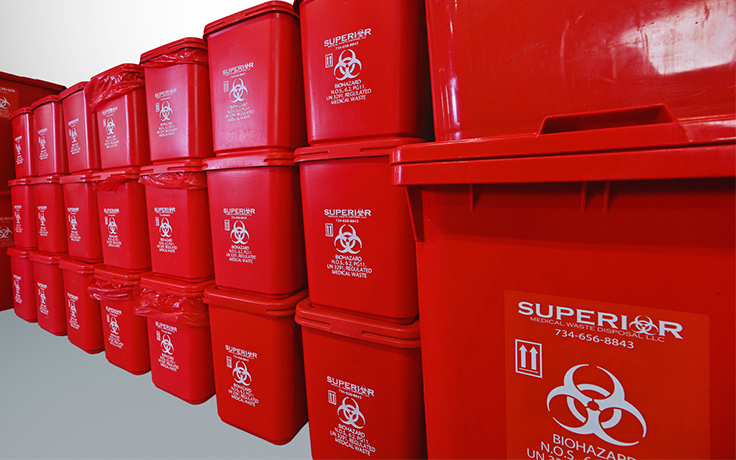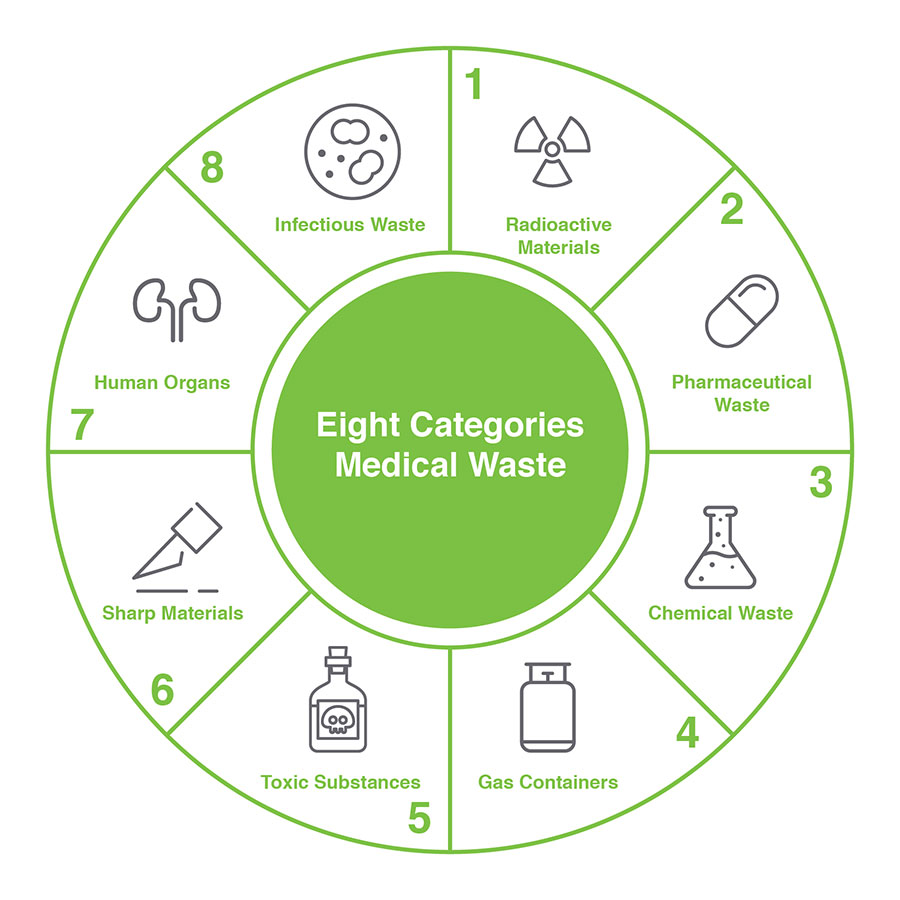Medical Waste Removal Proficiency: Where Service Excellence Meets Health Standards
Wiki Article
Stay Ahead of Laws: Specialist Suggestions on Medical Waste Disposal
In a globe where the medical care market is continuously evolving, it is vital for clinical facilities to remain in advance of policies when it comes to the appropriate disposal of medical waste. From understanding the different groups of clinical waste to carrying out the best collection and partition approaches, this conversation will supply actionable ideas and beneficial understandings to aid facilities stay ahead of regulations in the ever-changing landscape of clinical waste disposal.Comprehending Clinical Waste Categories
Understanding clinical waste groups is essential for appropriate disposal and administration in healthcare facilities. Clinical waste refers to any type of waste generated by medical care tasks that may posture a risk to public wellness or the environment. It is critical to categorize clinical waste accurately to ensure its risk-free handling, transportation, treatment, and disposal.There are several categories of medical waste that medical care facilities need to be aware of. One of the most usual categories include contagious waste, pathological waste, sharps waste, pharmaceutical waste, and chemical waste. Each group has specific guidelines and guidelines for its correct management and disposal.
Infectious waste includes products infected with blood or various other bodily fluids, such as gloves, gowns, and lab societies. Pathological waste describes human cells, body organs, or body components that call for unique handling and disposal. Sharps waste consists of made use of needles, syringes, and various other sharp objects that can cause injury and transmit infections. Pharmaceutical waste comprises expired, unused, or polluted medications that need cautious handling and disposal. Finally, chemical waste consists of solvents, disinfectants, and other chemical compounds utilized in health care facilities.
Staying Up-To-Date With Regulatory Adjustments
Staying current with regulatory changes is vital for medical care facilities to make sure conformity and proper administration of clinical waste disposal. medical waste removal. With policies regularly advancing, it is important for healthcare facilities to stay up-to-date to avoid charges, penalties, and potential injury to the atmosphere and public healthTo remain in advance of regulatory adjustments, health care centers must establish a system for surveillance and tracking updates. This can be done by subscribing to governing newsletters, participating in seminars and workshops, and actively joining market organizations. Furthermore, centers must mark a team member or group in charge of staying educated and disseminating details to relevant stakeholders.
Routine communication with regulative agencies is likewise vital. Healthcare centers should establish partnerships with regional, state, and government agencies to ensure they recognize any modifications in laws that may impact their waste management methods. This can be done via normal meetings, participation in public comment periods, and positive engagement with governing firms.
Furthermore, medical care facilities need to think about partnering with waste management business that specialize in medical garbage disposal (medical waste disposal services with WasteX). These firms are frequently skilled in the most up to date regulations and can offer assistance and assistance to make sure conformity
Applying Proper Collection and Segregation Methods
To efficiently manage medical waste disposal, healthcare facilities should develop appropriate collection and segregation techniques based on regulative guidelines. Executing these methods guarantees the safe handling and disposal of potentially hazardous products, shields the setting, and decreases the threat of injuries and infections to medical care employees and the general public.
Appropriate collection and segregation methods involve using designated containers and labeling systems. Medical care centers must offer clearly labeled containers for various kinds of clinical waste, such as sharps, contagious waste, pharmaceutical waste, and non-hazardous waste. These containers ought to be color-coded and clearly marked to stay this clear of complication and promote simple identification.
Additionally, healthcare centers need to educate their personnel on the appropriate procedures for collecting and segregating clinical waste. This consists of educating them on the various sorts of waste, the ideal containers to make use of, and the importance of complying with regulations and standards. Routine training sessions and correspondence course ought to be performed to make sure that staff participants remain current on finest techniques.
Moreover, healthcare facilities should develop a system for regular collection and disposal of medical waste. This might include partnering with qualified waste management firms that specialize in clinical garbage disposal. These business will certainly ensure that the accumulated waste is carried and dealt with in conformity with regulatory needs.
Choosing the Right Disposal Techniques

Incineration is one of the most efficient and typical techniques for taking care of certain sorts of medical waste, such as pathological waste and sharps. It involves the controlled combustion of waste at heats, reducing it to ash. However, incineration can release dangerous contaminants right page into the air and contribute to air contamination.
Various other disposal techniques consist of chemical therapy, microwave treatment, and landfilling. Chemical therapy involves the use of chemicals to decontaminate and counteract the waste. Microwave therapy makes use of microwave energy to warmth and sanitize the waste. Landfilling involves hiding the waste in a designated land fill area (medical waste disposal services with WasteX). Landfilling must be the last hotel due to the possible risk of contamination to soil and groundwater.
Ensuring Compliance Via Paperwork and Training
After very carefully taking into consideration the appropriate disposal techniques for medical waste, medical care facilities need to guarantee conformity with policies and minimize environmental effect by implementing effective documents and training procedures. This step is critical in maintaining a lasting and risk-free atmosphere for both healthcare workers and the basic public.
Medical care employees that take care of clinical waste needs to obtain ideal training on waste partition, handling, and disposal procedures. By providing comprehensive training, healthcare facilities can encourage their team to make enlightened choices and decrease the threat of inappropriate waste disposal.
Verdict
In verdict, remaining in advance of guidelines in clinical garbage disposal is critical for healthcare facilities. medical waste removal. Comprehending the different classifications of medical waste, remaining upgraded with regulatory changes, executing correct collection and partition methods, choosing the appropriate disposal methods, and making sure compliance through paperwork and training are all vital steps. By following these standards, medical care companies can efficiently get rid of and take care of of medical waste in a risk-free and liable fashionFrom understanding the different categories of medical waste to executing the best collection and partition methods, this discussion will provide workable tips and useful insights to aid facilities stay in advance of regulations in the ever-changing landscape of clinical waste disposal. - medical waste disposal services with WasteX
The most typical groups consist of infectious waste, pathological waste, sharps waste, pharmaceutical waste, and chemical waste. Healthcare facilities must supply plainly classified containers for various types of medical waste, such as sharps, infectious waste, pharmaceutical waste, and non-hazardous waste. Healthcare facilities must develop a detailed system to videotape and track all facets of clinical waste disposal, including kinds of waste generated, quantities, and disposal methods utilized. Health care employees that take care of medical medical waste disposal services with WasteX waste ought to get ideal training on waste partition, dealing with, and disposal treatments.
Report this wiki page